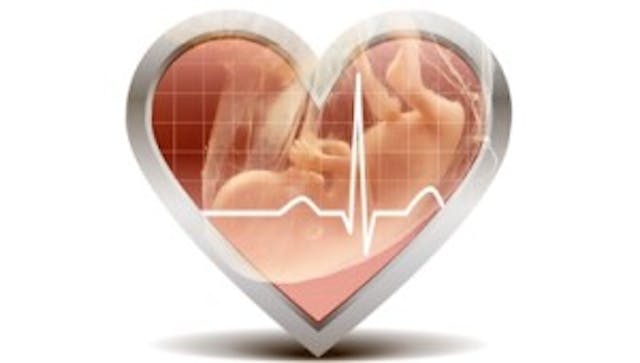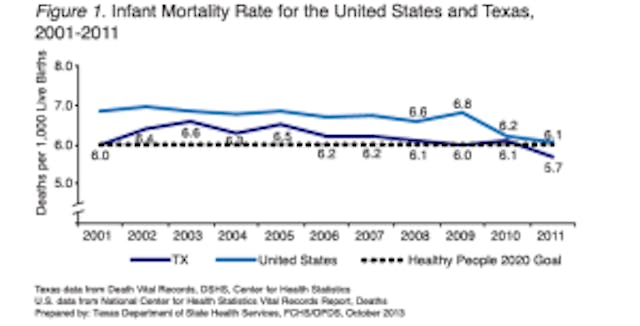
Fact Check: Woman says she was denied treatment as baby 'poisoned her from inside out'
Nancy Flanders
·
Analysis·By Catherine Livingston, PhD
Abortion advocate’s solution for infant mortality crisis: Kill babies before birth since they might die anyway

Abortion is necessary for public health, says an article in the Huffington Post. It’s an argument that falls apart fast, though. In analyzing arguments, any AP English student will tell you that one must examine the ethos, pathos and logos of the argument, and in all three of these areas, this piece fails.
First to go is her ethos, which speaks to the credibility of the speaker to make an argument. In this case, the author is Terry O’Neill, president of the National Organization for Women (NOW), a pro-abortion organization with an interest in abortion over true public health concerns. She’s not arguing for care, as she says, but abortion.
O’Neill’s argument centers around the US infant mortality rate. She says that abortion is “essential, effective medical care” to assist with reducing the infant mortality rate. Here she eases into the pathos realm where she draws upon appealing emotionally to readers. She writes:
“Each year, about one million infants die on the same day they’re born. This includes about 11,300 infants in the United States. That’s 30 infant deaths each and every day! If that sounds like a lot, it’s because it is.”
The redundancy of her syntax, “each and every day,” with the added exclamation mark, are ploys to convince us that this tragedy must cease. However, her answer for its cessation is the ultimate irony: We need to kill more babies in the womb, she says, so they won’t die once they are born, she asserts.
If you just did a double take, it’s because her logos appeal has been overruled. Logic is only logical if it makes sense; O’Neill’s argument employs non-sequitors here. The Latin term means “it does not follow” and occurs when an arguer takes a line of logic and derails it, as O’Neill has done. While her initial logic may be substantiated, instead of addressing ways in which we can improve the infant mortality rate, funnel government funds out of abortion-focused organizations and into actual health care organizations, and offering ideas that would educate and care for mothers and babies, O’Neill essentially argues that since babies are dying, we ought to just kill all the babies that are born to teenager, especially poor ones:
“A big part of this shameful failure of our public health system is the fact that the U.S. has the highest adolescent birth rate of any industrialized country. And because teen mothers tend to be poorer, less educated and receive less prenatal care than older women, babies born to teen mothers are more likely to be low birth weight and be born prematurely, and to die in their first month.”
Additionally, her logic takes a flying leap into lying when she argues “But do the math — as more states like Texas and North Carolina restrict access to abortion care, more women are dying in childbirth or pregnancy, and more infants are not surviving to their first birthday.”
First, complete data for states which have passed laws in the last year isn’t even in existence yet. Looking at Texas, for example, which is probably most known for passing a sweeping abortion-restriction bill, HB2, shows that there is no substantiation to O’Neill’s argument. In this 2013 report on infant mortality, offers data only until 2011, referring to provisional 2012 data which is not yet available for complete analysis. HB2 passed last summer. It is factually and statistically impossible for O’Neill to draw conclusions on its effects on infant mortality or pre-term births. Further, it is irresponsible to jump on a national media vehicle and assert something without factual data to support it. If O’Neill had done her research she would have found that infant mortality rates have been on a consistent decline in Texas. This graph from the Texas Department of State Health Services indicates that preliminary 2012 data shows the infant mortality rate to be dropping more.

Meanwhile, the Texas report says the state has been struggling with pre-term birth rates apart from any passage of abortion laws:
“The preterm birth rate in Texas has consistently been higher than the national average over the past ten years (see Figure 4). From 2010 to 2011, the preterm birth rate decreased by three percent and this decrease has carried over into 2012. However, Texas is still far from meeting the HP2020 goal for preterm births.”
What Texas has done is decide to use its money in non-abortion settings, taking the same funding but moving it to agencies that actually care for women without killing their babies, in an effort to address the maternal and infant health issues that permeate our nation. The answer to babies dying isn’t to kill them so they don’t see the light of day first.
O’Neill’s dramatic sentence, “That’s 30 infant deaths each and every day! If that sounds like a lot, it’s because it is” is actually haunting, but not the way she means it. In reality, it’s estimated that over 3,500 babies die each and every day! Now that number, that number is a lot! No babies should die. But we have a better chance of saving those 30 a day if we focus on actually caring for those at risk and not killing 3,470 more babies just to be sure they don’t die after birth.
Good arguments are sustained by facts, interwoven with appropriate emotional for relatability and delivered by someone credible to make the statements. O’Neill’s argument fails on all accounts.
Live Action News is pro-life news and commentary from a pro-life perspective.
Contact editor@liveaction.org for questions, corrections, or if you are seeking permission to reprint any Live Action News content.
Guest Articles: To submit a guest article to Live Action News, email editor@liveaction.org with an attached Word document of 800-1000 words. Please also attach any photos relevant to your submission if applicable. If your submission is accepted for publication, you will be notified within three weeks. Guest articles are not compensated (see our Open License Agreement). Thank you for your interest in Live Action News!

Nancy Flanders
·
Analysis
Nancy Flanders
·
Newsbreak
Angeline Tan
·
Human Interest
Nancy Flanders
·
Issues
Nancy Flanders
·
Pop Culture
Cassy Cooke
·
Human Interest
Catherine Livingston, PhD
·
International
Catherine Livingston, PhD
·
Newsbreak
Catherine Livingston, PhD
·
Human Interest
Catherine Livingston, PhD
·
Human Interest
Catherine Livingston, PhD
·